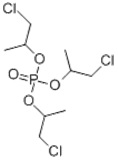2-Ethyl Hexyl Acrylate CAS:103-11-7 Production 2-Ethyl Hexyl Acrylate is produced by reacting 2-ethyl hexanol and acrylic acid in a dehydratation process that acts as the catalyst. 2-Ethyl Hexyl Acrylate will react with oxidising agents such as alkalis and will polymerise when heated. Polymerisation is inhibited by hydroquinone. 2-Ethyl Hexyl Acrylate Chemical Structure Composition. Uses 2-Ethyl […]

Request a quotation
To request a quotation, please click on the button on the right.
Flame Retardants
Flame retardants corresponds to several substances which are added to combustible materials to prevent fires from starting or to slow the spread of fire and provide additional escape time. Among them, there exist TCPP and TEP.
-
TCPP (CAS : 13674-87-8)

TCPP Chemical Structure Composition.
Tris (1-chloro-2-propyl) phosphate is an PU foam’s additive used as flame retardant in consumer products, home insulation and electronics. The product is a colorless liquid stable at ambient temperature and not volatile. It’s obtained by a reaction of 1-chloro-2-propanol with phosphoryl chloride in the presence of a catalyst.
-
TEP (CAS : 78-40-0)

TEP Chemical Structure Composition.
Triethyl phosphate is not only used for PU foam. It can reduce also the viscosity of some polyols and prepolymers. TEP can be produced in 2 various ways : by reaction of phosphoryl chloride with ethanol or by oxidation of triethyl phosphite.
Flame retardants shows low acute toxicity following oral, dermal or inhalation exposures. It’s a slight skin and eye irritant and is not genetically active.
Arpadis is one of the largest chemical distributor in Europe.
Arpadis is handling the storage, transport, export & import formalities of Flame Retardants globally.


